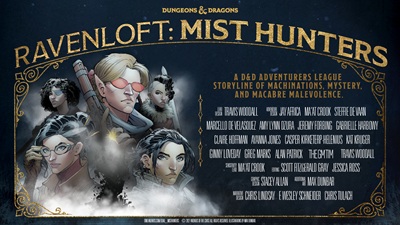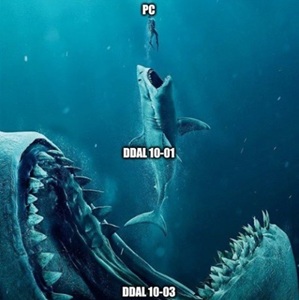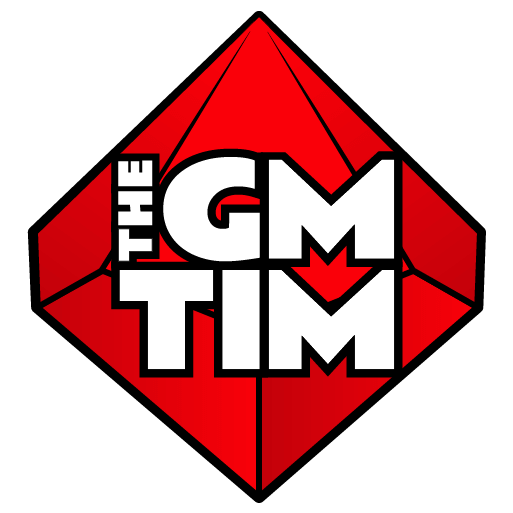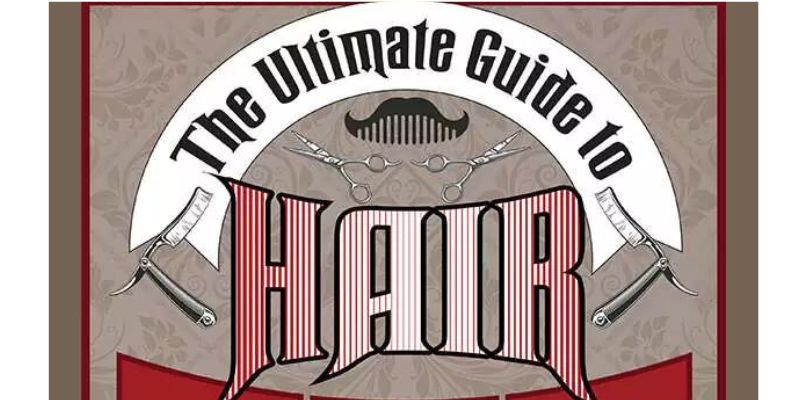It’s 2025 and a few years have passed since I last wrote a module for Adventurers League. As the League evolves and Legends of Greyhawk is being introduced at Baldman Games events, I thought I might share what I have learned so far through my experience in module writing.
I fully admit, part of this is probably because I am getting older. I try to avoid nostalgia. I find it, I don’t know, fake. In this case, I think it’s good to remind myself why and how I got to do some of the experiences I’ve had. Plus, let’s be real, the last few years have felt more like a couple decades:
Flashback to spring 2019.
Getting Started
D&D 5e was barely five years old. I had only been playing dungeons & dragons since starting my 4e campaign in 2012. I had been the GaymerX Tabletop Coordinator at GX3 in 2016 and GX4 in 2017, and now I was the League’s Coordinator for Western Canada. In 2018, I graduated from university and was trying to figure out how to use my new Communication degree. Since summer 2016, I had been running D&D at Conventions for the League and proved my skill enough a DM to run VIP tables. The GM Tim brand was barely two years old. And I had met and became friends with literal power houses in the industry.

I had done my first two years as Talent at D&D in a Castle. I had ended a two year actual play D&D podcast called Loose Endz where I taught myself actual audio-editing and recording skills (half that core group still play together today). I had just completed my first season of my Star Trek Adventures actual play series. I had a deal with a new YouTube hopeful network (didn’t work out). I ignored this new thing called TikTok (dang?). I even had a beard cause, I don’t know…reasons?

I was feeling bold. I was running all these modules written by other people and thought, I can do that.
To this day, writing for the Adventurers League was one of the most challenging and rewarding creative endeavours I have taken on. There were days when I just hated it. Deadlines, SRD rules, working within someone else’s vision, playtest feedback that was—not feedback, writing in Chicago style and spelling words like honour and colour incorrectly, did I mention deadlines? Despite these challenges, it was magic.
(This was pre ADHD diagnosis. I now understand why those were so tricky.)
I learned of my capacity to write more than academia, or letters that rambled on. I learned how to edit drafts before sending them off. I learned how to write adventures that offered player agency rather than dictate the experience (difficult to do, and so worth it). I learned how to not take my writing preciously.
That was really hard. The people editing were people I genuinely looked up to. Plus, I always felt like I needed to prove myself to the people who trusted me to do the work. Not to mention, I knew how some of the DMs spoke about the modules (ruthless btw, still are – call me out if you catch me doing it. It doesn’t help anyone). That was still only the second hardest lesson. The first being: As the writer, once you hand it off – it’s no longer yours.
Infernal Insurgency
My first published module was INFERNAL INSURGENCY (DDAL 09-06). Damn, I was proud of that module. The first time in my life something I made for a tabletop game that was published for mass use. It was also the first time I realised how you can draw from movies and books for the adventures I wrote. While everyone’s home games often do this, writing an adventure that gives homage to The Dirty Dozen, and suggesting people to play as such, while not plagiarising it, is not as easy as one might think. How did it go?
This is a messy, poorly presented adventure, but there is so much invention and material here that, if you can work out what’s going on, you can enable an entertaining session. I certainly did, but, for an adventure with three editors, you’d expect better.
Another review on The Alexandrian said,
Weird inter-adventure continuity aside, Infernal Insurgency is a pretty good scenario.”
They gave it a C grade.
I mean, considering a lot of the other adventure’s grades I’ll take it. Still, it was hard to hear comments. It is still hard, at PAX this year I had someone ask me, “so what’s up with the NPC team, they have different names in the module than they do at the back.” I had to simply say, “oh yeah it was a mistake that wasn’t caught.”
The Deadliest Game
Two years later was tapped to write THE DEADLIEST GAME (RMH-09), in the Misthunters Series. This was a cool project. Sort of a League bonus season to coincide with Van Richten’s Guide to Ravenloft. I spent a lot of time making sure I was following my module outline while sticking to the new source material that Whitney Beltrán had written about Valachan. My theme aimed for a mix of The Running Man and Cannonball Run all while being hunted by Predator. I think I got it. I went for a creative in-media-res opener that had not bee successfully pulled off in the Leage. The editor warned me about it yet let me do. It didn’t pay off as well as I had hoped.
The reviews? I only found one on DMsGuild,
What I liked: The overall content is great here…The encounters themselves are a great group of options…The encounters work to drain party resources so the later encounters feel dangerous and deadly…THE BIG PROBLEM: With 9 adventures in, more concrete details are needed to motivate players across the overall story.
For the most part, I never really heard much chatter about this series after it launched. I believe there are a lot of contributions to that: It was heavy theatre of the mind, and we had all just gone hard on Covid Lockdown Gaming, so no maps meant nothing to put on the screen. Also, the cost of these modules is quite high. I don’t know the reasoning myself. I suspect it is because there was a closer Dungeons & Dragons corporate connection.
I want to make it clear. I am very happy I got to write in both these series. I am not dismissing responsibility for my writing; I got better by learning from every one. And I am better now that I was then. The Misthunters Series for example, while perhaps annoying Dread Domain purists, demonstrated to me that a team format is possible in D&D, and I am building a similar vibed story series for Eberron now.

My overall critique when writing in large groups of TTRPG authors: too many chefs in the kitchen. With so much talent, too many of us know different ways to do things. In both of these series, somewhere along the line, communication faltered, sections were cut, outlines were referenced not drafts (like the DM at PAX noticed about my NPC issues). Without a strong guide, continuity and story flow between modules, fails. Every DM knows for a fact that is difficult enough to do when it’s a home game, “wait, you guys did what last week?” Yet we have to mange it. Eleven seasons in and something still wasn’t working. I also wish I had worked more closely with Marcello De Velazquez who wrote The Scion of Darkness, so our two-parter flowed better.
Divining Evil
I critique this way because I deeply care. I love the game. And organised play is a really really cool thing. Season 10, Plague of Ancients, for at least the pentalogy I was part of, exemplifies the best version of the League format.
DIVINING EVIL (DDAL10-03) came out in late 2020. This is adventure is one I am the most proud of. I am not a horror genre fan and made it a struggle to write, yet most excellent. It started with a gruesome murder. There’s an investigation, a nasty item that can warp the PCs, a monster in the dark always tracking, a chase scene, a monster well out of your league that you are meant to run from. There were D&D tropes being broken, it was ruthless, and it was unforgiving, and I had so much fun building it. Also, I added poly-queer coded NPCs into the adventure well enough that those who knew, knew, and those who didn’t, didn’t notice.
The reviews?
DM Greg did a streamed edition on Fantasy Grounds and the players seemed to really enjoy themselves. (Spoilers if it matters to you)
Chay Comas at the Rule of Cool said,
I recommend it for groups eager to explore a hauntingly immersive adventure. Its compelling plot, atmospheric setting, and well-crafted encounters ensure a memorable experience for both novice and seasoned players alike.
There were a couple comments that it didn’t work alone. It does, with work. Except, this module was never meant to be a standalone. It works best with the full series: The Frozen North by Dr. Paige Leitman, Gnashing Teeth by Laura Thompson, then mine, followed by Cold Benevolence by Justice Arman, and finally A Blight in the Darkness by Patricia Barnabie.
This season wasn’t rushed, including editing and layout. We writers met regularly to make sure we had creature and culture continuity; we even referenced each other’s story or plot. I think those are the key take-aways. We had time and we communicated! Even when a writer had to be switched out last minute, the other 4 of us had such a good lore and connection that they were able to just get right in there. It’s been 5 years now, and I still remember our writer’s meetings. Like, truly enjoyable to work with such incredible people.
I got the best complement I have ever had from this adventure. Paige, Laura, and Justice are all very good at what they do. Paige has some of the best League adventures written and Justice is the Managing Game Designer for D&D now. As our modules hit the Convention circuit, this meme was sent out. I would not be prouder with a piece of work I did for years.
I also think that enough time has passed I wouldn’t mind making like unofficial errata adjustments to these modules. I’ll tag that up as a future possibility.

Looking Back, and Foward
In the end I am forever grateful for these modules I got to do. They showed me what I am capable of and pushed my skills further than they ever would had I not. They taught me how to not take editing personally, and how to be a better writer—I still give credit to Travis Woodall for all the coaching and angelic patience he gave me while editing my modules. My writing experience with the League set me up for culture mining, referencing culture appropriately for ideas, and working well with others in a field where sometimes it feels so competitive because it is, not because it has to be.
I’ll prove it when I do some modules for Baldman Games and Legends of Greyhawk *cough*bighint*cough*.





0 Comments